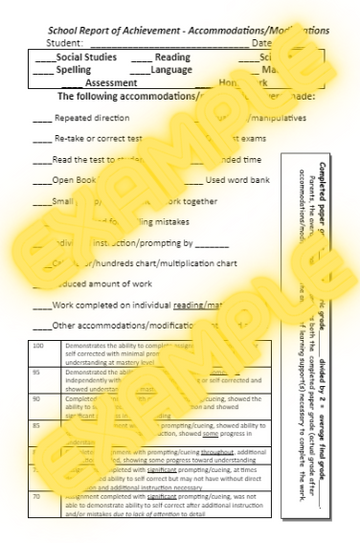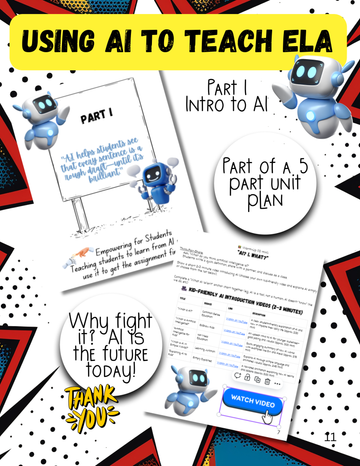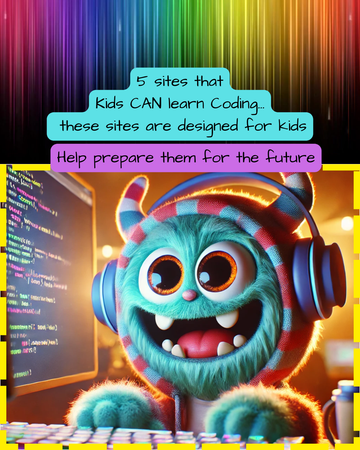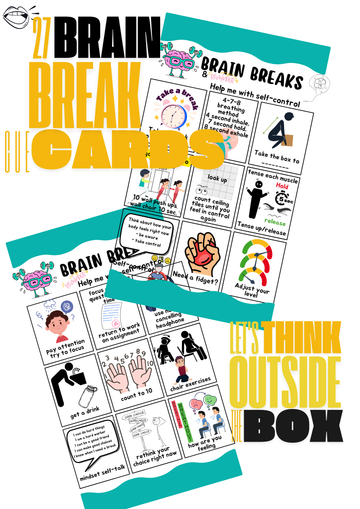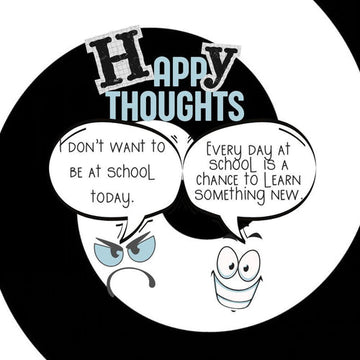Being an educator requires a broad comprehension of numerous concepts, approaches, and strategies. Meeting the needs of all students, regardless of their skills or impairments, is one of the most important parts of education. To describe how they may cater to the specific needs of each student, teachers and educators frequently utilize several words, accommodation, modification, differentiation, and adaptation. These “buzzwords” are always changing. Just remember, the only constant in education is change. On top of that these words are frequently used interchangeably and may be interpreted differently by individuals. We'll talk about how these four concept words differ in the context of education in this blog.
Accommodations
Accommodations can be made to the curriculum itself, the learning environment, or the outcome/assessment process to help students with special needs or impairments complete the task. Accommodations, however, affect how the material is presented or accessed, rather than its content or degree of difficulty. Physical accommodations, like pencil grips, lined paper, graphic organizers, word banks, additional time, and working in a different area are some examples. Technological accommodations can include things such as text-to-speech software or the provision of Braille materials, larger fonts, and audiobooks. Additionally, students may be allowed to draw to illustrate understanding rather than writing, they may be allowed to use a calculator or take assessments from an open book. Whatever the case may be the curriculum is the same as the rest of the class.
Modification
To meet the demands of students with more severe needs or impairments, modifications may alter the curriculum or the degree of difficulty of the subject matter. Changes are made to the curriculum, tasks, or standards to enable students to engage and perform well in the classroom but at their individual level. The language may be made simpler - there are many books now that come in multiple levels but are the same subject. This is where the words accommodations and modifications become muddled in some people's minds. In the case of using the same curriculum but different level books, some might say that the curriculum is the same so it is an accommodation. However, this is a modification because it is at a different grade level than the rest of the class. Other ways that tend to get confused are changes to the number of tasks, the instructional tempo may, or grading standards may be altered. You can see that there is a fine line at times. Typically though, when a student has a major cognitive or learning delay, modifications are used, and the curriculum may need to be significantly changed. Whereas accommodations will not change the curriculum level only the student’s access to it. The biggest take away here is that modifications are only for students that have documented disabilities and an Individualized Education Plan (IEP). It is also important to note that when they do, the teacher is bound by law to provide what is spelled out in the IEP in regard to modifications necessary for the individual student.
Differentiation
Differentiation is the process of adapting lessons and activities to each student's needs. You can see how that gets confused with accommodations and adaptations. It entails offering pupils various modes of learning and proving their understanding in accordance with their aptitudes, interests, learning styles, and talents. You might say that as a result of differentiation, the curriculum, and instruction are modified to better suit the needs of the students, who have a variety of backgrounds, experiences, and learning styles, but there’s where lines get blurred again. Modified doesn’t necessarily mean modification. Still more confusing is the fact that differentiation may take the form of offering students options for how they complete projects, utilizing a variety of teaching techniques, or utilizing adaptable grouping techniques. Differentiation and accommodations are more alike than different and often are just good teaching strategies. They can be used with students that don’t have any cognitive impairments but have other struggles in the classroom (maybe they are extremely gifted, have ADD or ADHD but without a formal educational diagnosis that provides them an IEP, possibly it is something as simple as they don’t have the internet at home and need something different because of this) or where the language of the classroom is a barrier (Alternative Language Learners)
Adaptation
Any alteration or adjustment made to the curriculum or the learning environment to accommodate the requirements of particular pupils is referred to as adaptation. This is a more general term that includes accommodations, modifications, and differentiation. To make sure that pupils are improving and achieving their potential, adaptation entails a process of constant assessment, monitoring, and adjustment. To establish a more welcoming and helpful learning environment, adaptation can involve making some type of change to the curriculum, instruction, assessment, or learning environment.
In conclusion, differentiation, adaptations, and accommodations are all crucial tools for addressing the specific requirements of each student in the classroom. Despite the fact that these words are frequently used interchangeably, they have distinct implications. The main thing to remember is that a true MODIFICATION cannot be made without an Individualized Education Plan. All these words are what teachers do every day to more effectively serve students with and without identified disabilities or special needs. By recognizing the differences between these terms, teachers can create a supportive environment to learn and grow and be able to report to parents and administration more effectively.
Being an educator requires a broad comprehension of numerous concepts, approaches, and strategies. Meeting the needs of all students, regardless of their skills or impairments, is one of the most important parts of education. To describe how they may cater to the specific needs of each student, teachers and educators frequently utilize several words, accommodation, modification, differentiation, and adaptation. These “buzzwords” are always changing. Just remember, the only constant in education is change. On top of that these words are frequently used interchangeably and may be interpreted differently by individuals. We'll talk about how these four concept words differ in the context of education in this blog.
Accommodations
Accommodations can be made to the curriculum itself, the learning environment, or the outcome/assessment process to help students with special needs or impairments complete the task. Accommodations, however, affect how the material is presented or accessed, rather than its content or degree of difficulty. Physical accommodations, like pencil grips, lined paper, graphic organizers, word banks, additional time, and working in a different area are some examples. Technological accommodations can include things such as text-to-speech software or the provision of Braille materials, larger fonts, and audiobooks. Additionally, students may be allowed to draw to illustrate understanding rather than writing, they may be allowed to use a calculator or take assessments from an open book. Whatever the case may be the curriculum is the same as the rest of the class.
Modification
To meet the demands of students with more severe needs or impairments, modifications may alter the curriculum or the degree of difficulty of the subject matter. Changes are made to the curriculum, tasks, or standards to enable students to engage and perform well in the classroom but at their individual level. The language may be made simpler - there are many books now that come in multiple levels but are the same subject. This is where the words accommodations and modifications become muddled in some people's minds. In the case of using the same curriculum but different level books, some might say that the curriculum is the same so it is an accommodation. However, this is a modification because it is at a different grade level than the rest of the class. Other ways that tend to get confused are changes to the number of tasks, the instructional tempo may, or grading standards may be altered. You can see that there is a fine line at times. Typically though, when a student has a major cognitive or learning delay, modifications are used, and the curriculum may need to be significantly changed. Whereas accommodations will not change the curriculum level only the student’s access to it. The biggest take away here is that modifications are only for students that have documented disabilities and an Individualized Education Plan (IEP). It is also important to note that when they do, the teacher is bound by law to provide what is spelled out in the IEP in regard to modifications necessary for the individual student.
Differentiation
Differentiation is the process of adapting lessons and activities to each student's needs. You can see how that gets confused with accommodations and adaptations. It entails offering pupils various modes of learning and proving their understanding in accordance with their aptitudes, interests, learning styles, and talents. You might say that as a result of differentiation, the curriculum, and instruction are modified to better suit the needs of the students, who have a variety of backgrounds, experiences, and learning styles, but there’s where lines get blurred again. Modified doesn’t necessarily mean modification. Still more confusing is the fact that differentiation may take the form of offering students options for how they complete projects, utilizing a variety of teaching techniques, or utilizing adaptable grouping techniques. Differentiation and accommodations are more alike than different and often are just good teaching strategies. They can be used with students that don’t have any cognitive impairments but have other struggles in the classroom (maybe they are extremely gifted, have ADD or ADHD but without a formal educational diagnosis that provides them an IEP, possibly it is something as simple as they don’t have the internet at home and need something different because of this) or where the language of the classroom is a barrier (Alternative Language Learners)
Adaptation
Any alteration or adjustment made to the curriculum or the learning environment to accommodate the requirements of particular pupils is referred to as adaptation. This is a more general term that includes accommodations, modifications, and differentiation. To make sure that pupils are improving and achieving their potential, adaptation entails a process of constant assessment, monitoring, and adjustment. To establish a more welcoming and helpful learning environment, adaptation can involve making some type of change to the curriculum, instruction, assessment, or learning environment.
.
In conclusion, differentiation, adaptations, and accommodations are all crucial tools for addressing the specific requirements of each student in the classroom. Despite the fact that these words are frequently used interchangeably, they have distinct implications. The main thing to remember is that a true MODIFICATION cannot be made without an Individualized Education Plan. All these words are what teachers do every day to more effectively serve students with and without identified disabilities or special needs. By recognizing the differences between these terms, teachers can create a supportive environment to learn and grow and be able to report to parents and administration more effectively.
Look for the next blog that gives tons of examples!

